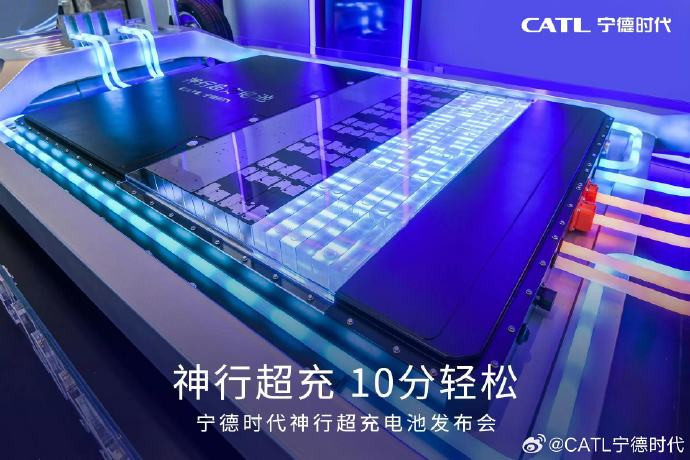On August 16, CATL unveiled its "Shenxing" battery, the world's first enhanced lithium iron phosphate (LFP) ultrafast charging battery.
According to CATL, the battery utilizes a 4C LFP supercharging technology that can achieve a range of 400km with just a ten-minute charge. This breakthrough addresses the previous limitations of LFP batteries' inability to handle rapid charging.
In technical terms, the Shenxing battery boasts impressive supercharging capabilities, capable of reaching 80% charge in ten minutes. (Using 1C as a standard 60-minute full charge, 4C implies a full charge in 15 minutes). Through advancements in the anode, cathode, electrolyte, and the SEI membrane, CATL has enhanced the conductivity of the LFP, resulting in improved charging efficiency.
Avesta announced its intention to be among the first brands to incorporate the Shenxing ultrafast battery from CATL. Furthermore, CATL has hinted at potential partnerships with brands like Changan, Chery, Jikre, and Nezha via social media.
With the introduction and application of this new battery technology, the electric vehicle (EV) market is poised for significant expansion.
A report from Huatai Securities released on August 15 revealed that a collaboration between Huawei and Chery Selection intends to use CATL's M3P battery in their upcoming vehicle model, the Zhijie S7. This battery shares developmental logic with the Shenxing supercharging battery. The mention of the "lithium iron manganese phosphate battery" in product disclosures is widely interpreted in the industry as a clear indication of the M3P battery being used.
Additionally, Tesla's domestically produced Model 3 is rumored to be considering an upgrade using the M3P battery. This new material system has surpassed the energy density of traditional LFP batteries and offers a clear cost advantage.
Huatai Securities predicts that by 2027, the global market for lithium manganese iron phosphate batteries, based on this new material system, will surpass 500 billion yuan, highlighting its vast market potential.
Compared to ternary lithium batteries, LFP batteries have gained market favor due to their resilience to thermal runaway under high temperatures or physical damage, longer cycle life, and relatively lower cost.
The intrinsic electrical conductivity of LFP materials is relatively low, but with the introduction of the Shenxing battery by CATL, its charging limitations have been addressed.
Given these conditions, lower-market vehicles may benefit. Auto manufacturers might increasingly opt for LFP batteries as they support ultrafast charging at a reduced cost.
Simultaneously, with faster charging speeds and cost benefits, EVs are likely to penetrate the market even more quickly.
Currently, apart from CATL, companies like BYD, Eve Energy, and Guoxuan High-Tech are also gearing up for high-performance lithium manganese iron phosphate materials, further emphasizing the promising future of this technology.
Although the Shenxing battery showcases superior performance and economic benefits, its claim of achieving 400km range with a ten-minute charge equates to a charging power of approximately 300kW, given that the energy consumption is roughly 12.5kWh per 100km (actual figures might be higher).
However, most commercial charging stations currently available on the market operate within the 80-160kW range, leaving a gap in power requirements for this battery. This implies that, in the short term, its rapid charging potential might not be fully exploited.
Notably, CATL offers a solution to this challenge. In collaboration with Kuai B Technology, the company has introduced a liquid-cooled supercharging station with a maximum power output of 600kW. This ensures that the Shenxing battery can achieve its claimed 10-minute ultrafast charge, increasing its range by 400km.
However, there's a trade-off. The construction cost of the liquid-cooled supercharging station is double that of regular stations and is specifically designed to support CATL's 4C Kirin battery. There's no official clarification regarding its compatibility with the 4C Shenxing battery. For other vehicles, the station can only provide regular fast charging.






